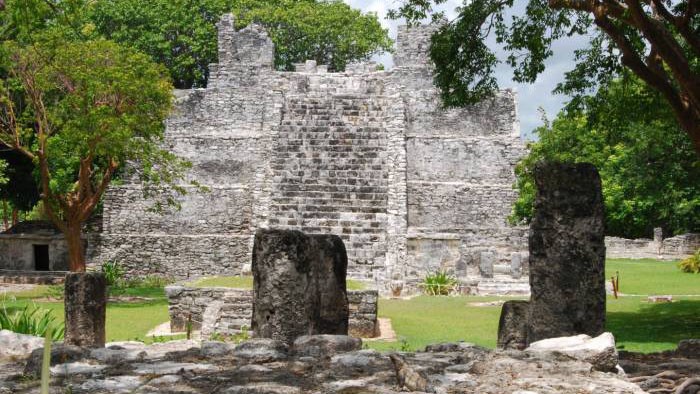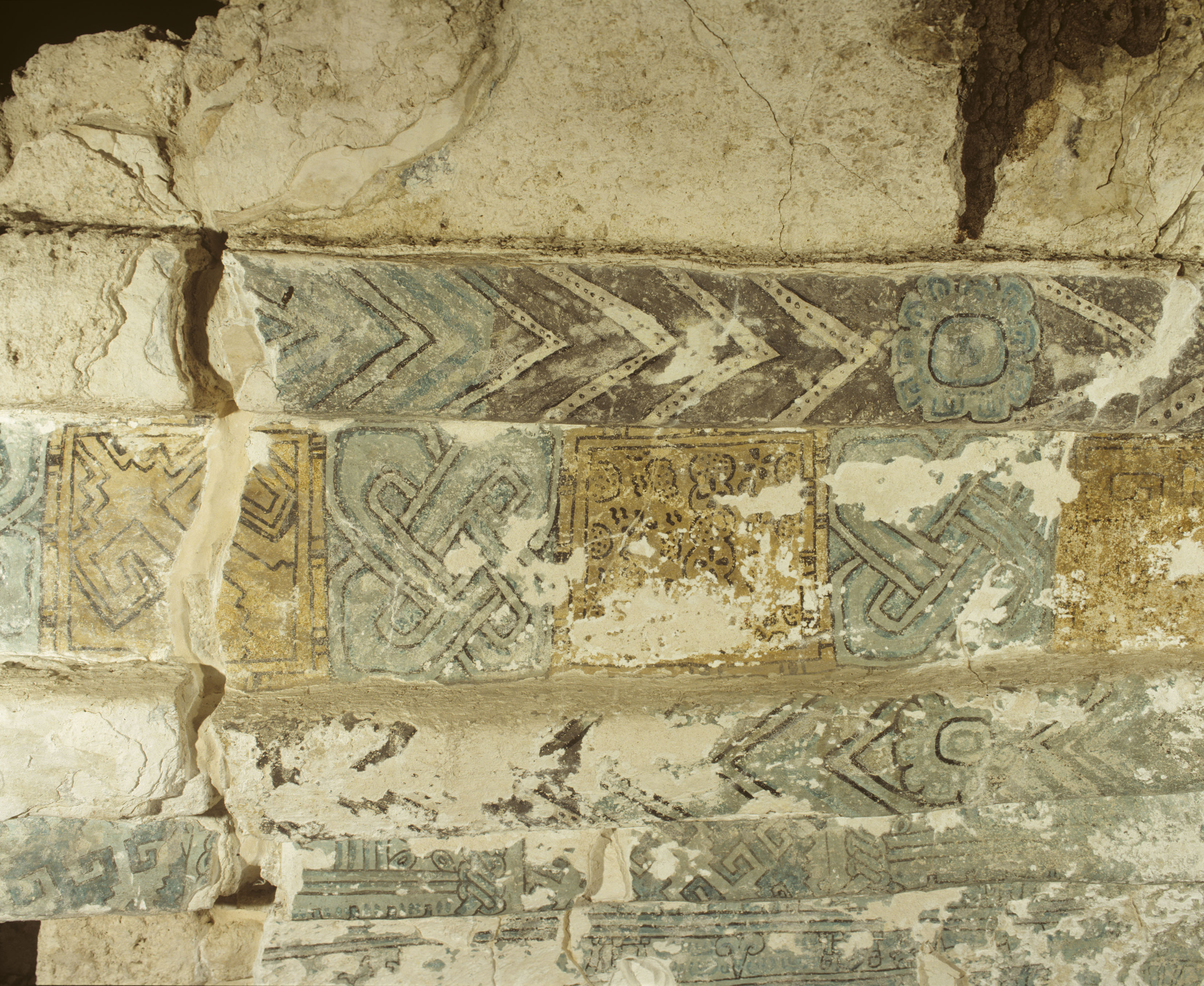The Calica complex includes fresh and salt water cenotes, the most important of which are Kaahú Hum and Yikliil Cab. The former has a pattern of low walls around the cenote forming patios; there is also a complex of residential platforms called the Cenote Group. The Yikliil Cab cenote on the other hand had no dividing or demarcating banks. This shows a form of controlling access to fresh water, the former was possibly for privileged groups, while in the latter cenote water was channeled for communal use.
The settlement pattern for this site is typified by a complex network of drystone dykes of limestone forming banks or walls which border the patios, some of which include residential platforms or structures but without buildings. There are a great many water holes and caves in this land, from simple caves to subterranean systems several miles in length. Some caves have dykes built inside them, to create living spaces. There are also caves with fresh water that had staircases built to facilitate access to the water.
This site is an example of the association between temples and caves, since the complex known as Kisim, or the Stela Group, is built over a cave. There is also an example of an east-coast style building, known as the Temple of the Columns, which has a sanctuary inside known as Casa Azul (Blue House). This has 26 layers of stucco, including a mural on the facade depicting the occupants' world view, with 35% of the pigment intact.






